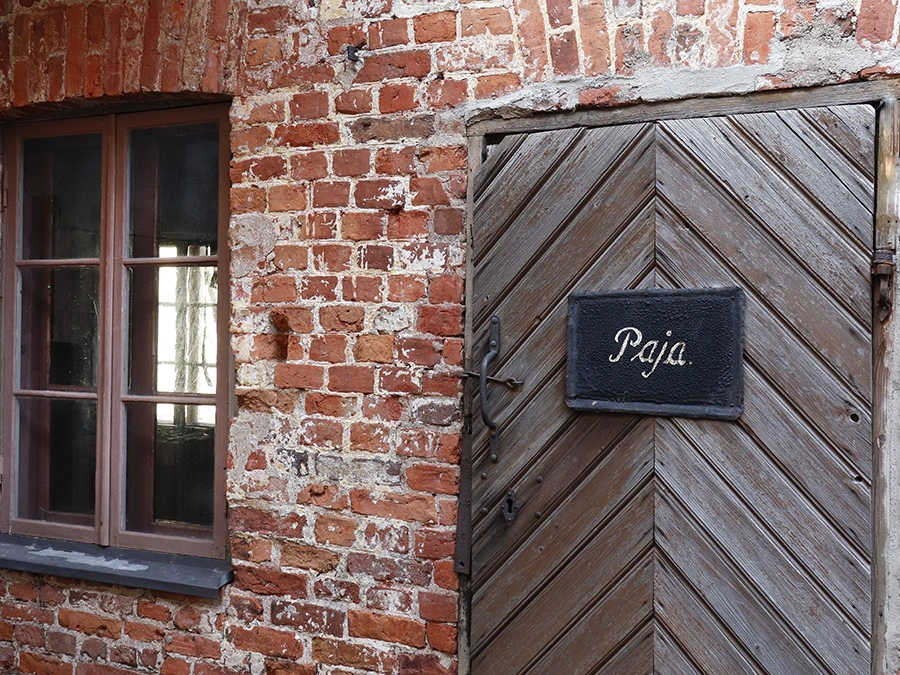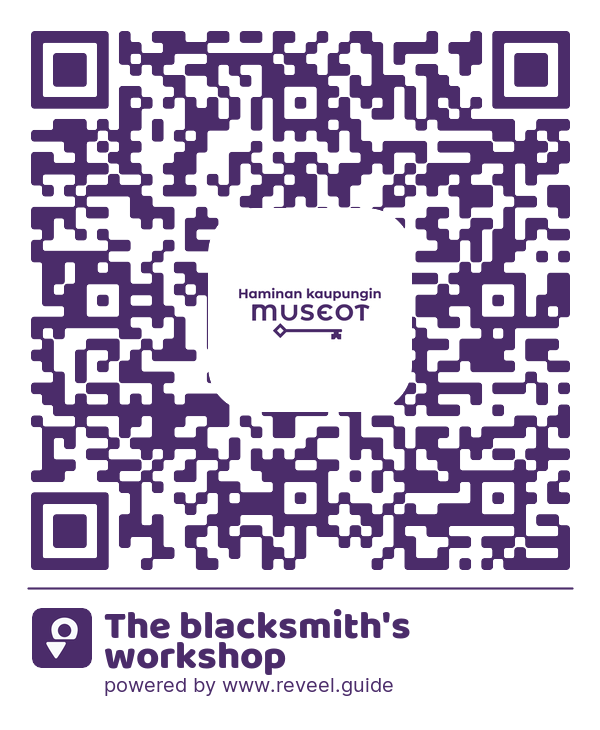
The blacksmith's workshop

The blacksmith's workshop
The two-story brick workshop and residential building was likely built during the time of coppersmith Grönberg in 1865–67. Building plans were drawn up between 1861 and 1863. Before that, the copper workshop was located near the current coachman's residence. Blacksmithing was still practiced in the current workshop building in the 20th century— a blacksmith named Wallius rented the workshop from merchant Muravjeff. He made tin, brass, and sheet metal works for compensation.
The workshop is largely in its original form, and the old soot has not been removed. The cement floor was added later. The workshop features a functioning forge, anvil, and tools.
Next to the workshop is a workroom where tin work, among other things, was done. Displayed are tools and products of the blacksmith's work, such as various utility items. Also on display is a wooden lathe, handmade prisoner shackles, ankle irons, wrist irons, and collar irons.
The large object in the corner of the workroom was on top of the chimney of the bakery, which is now the coachman's residence, where it acted as a wind direction vane, meaning the smoke passed through it.
The workshop also contains a grindstone that was used for sharpening tools. Its long handle was very practical, allowing the operator to turn the stone without fearing for their fingers.

